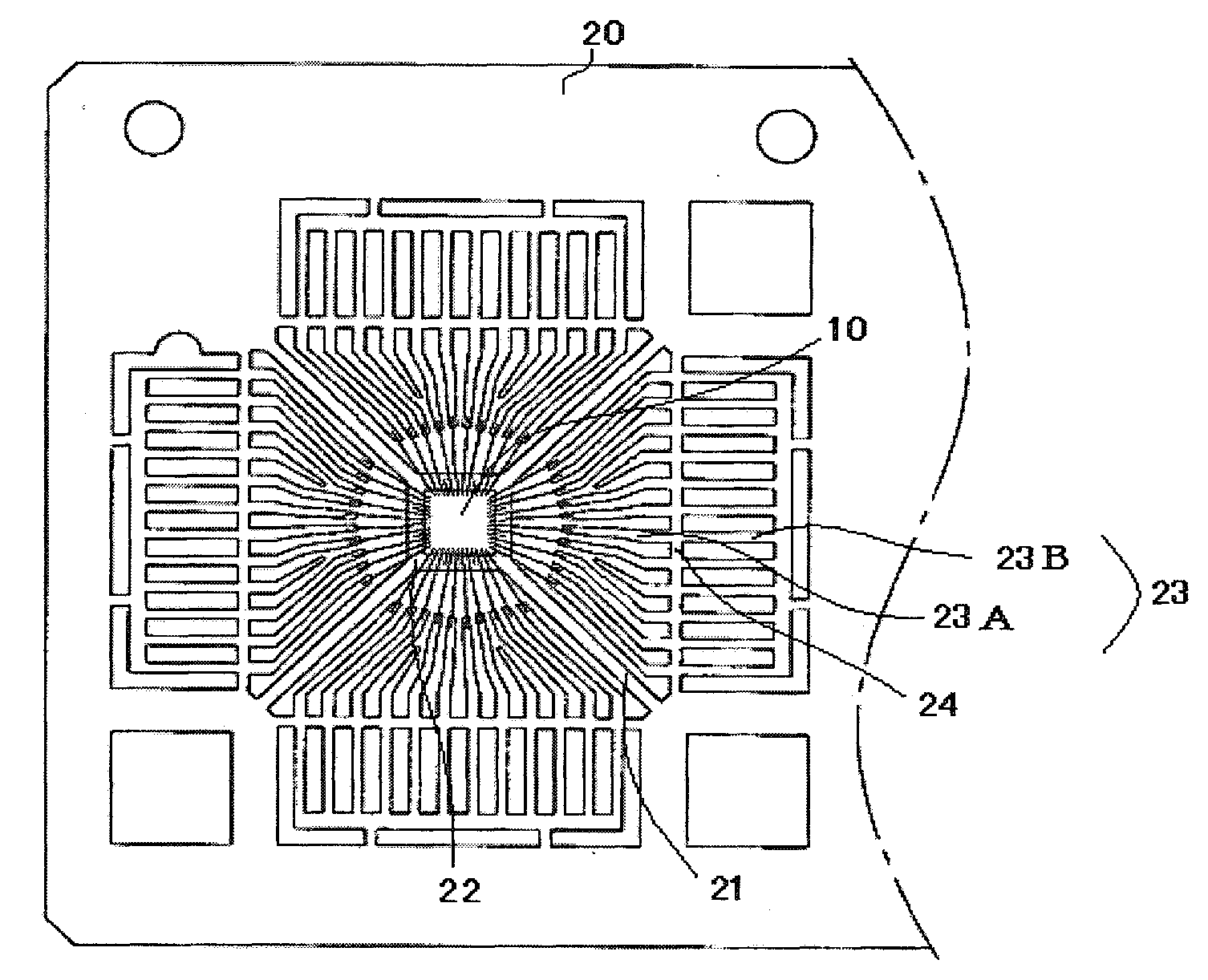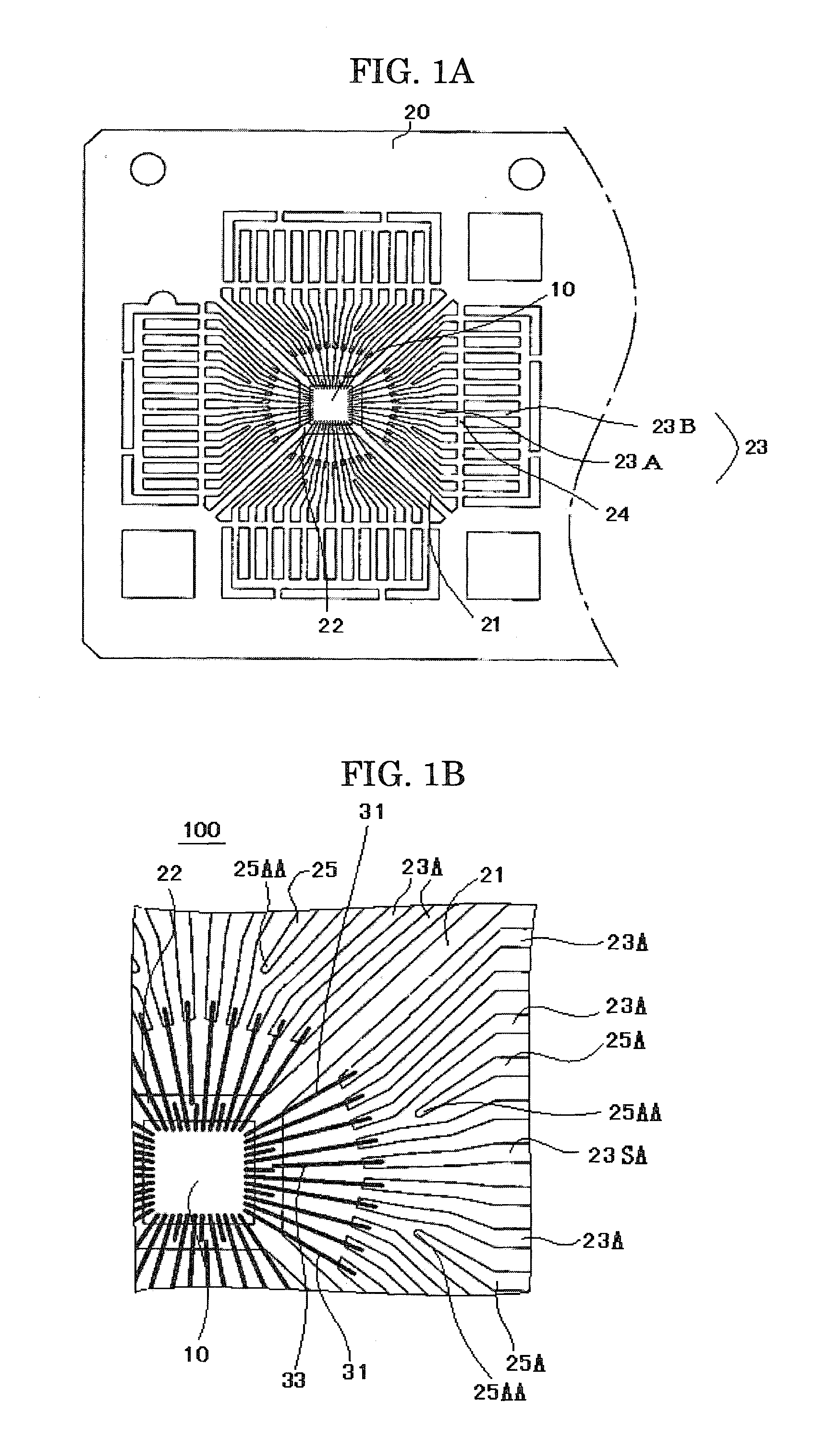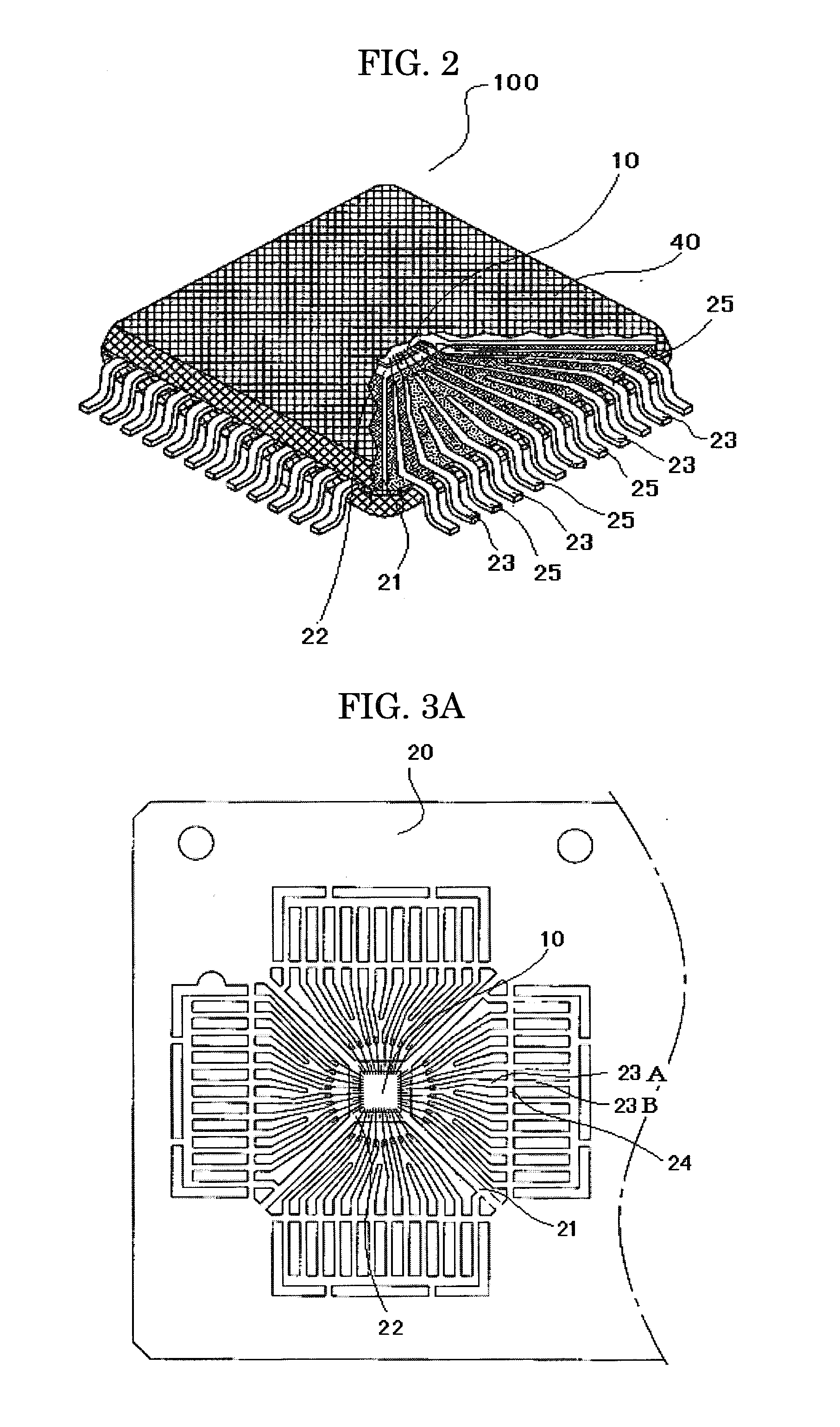Semiconductor device, leadframe and structure for mounting semiconductor device
a semiconductor device and leadframe technology, applied in semiconductor devices, semiconductor/solid-state device details, electrical apparatus casings/cabinets/drawers, etc., can solve the problems of lead formation and interference, stage bars (support bars) cannot support the die stage, and the fabrication of semiconductor devices becomes complicated
- Summary
- Abstract
- Description
- Claims
- Application Information
AI Technical Summary
Benefits of technology
Problems solved by technology
Method used
Image
Examples
example 1
[0044]A semiconductor device 100, a first example of the semiconductor device according to the present invention, is described with reference to FIGS. 1A, 1B and 2.
[0045]FIG. 1A shows a leadframe of the semiconductor device 100 and an arrangement of a semiconductor element mounted on the leadframe. FIG. 1B shows an enlarged essential part of FIG. 1A.
[0046]In this example, a semiconductor element 10 is mounted on and adhered to a rectangular die stage 22 of a leadframe 20, and die stage bars 21 support four corners of the die stage 22. Electrode terminals of the semiconductor element 10 are connected to leads 23 of the leadframe 20 through bonding wires 31 and optionally to the die stage 22.
[0047]The plurality of leads 23 (first leads) are aligned on substantially the same plane around the die stage 22. Each lead 23 has sections called an inner lead 23A and an outer lead 23B through a tie bar (dambar) 24. The inner lead 23A is closer to the die stage 22 (inner side) than the outer le...
example 2
[0071]A semiconductor device 200, a second example of the semiconductor device according to the present invention, is described with reference to FIGS. 3A and 3B.
[0072]FIG. 3A shows a leadframe of the semiconductor device 200 and an arrangement of a semiconductor element mounted on the leadframe. FIG. 3B shows an enlarged essential part of FIG. 3A.
[0073]Note that the same reference numerals are used for components corresponding to those of the semiconductor device 100 shown in FIGS. 1A, 1B and 2.
[0074]Similar to the first example, a semiconductor element 10 is mounted on and adhered to a rectangular die stage 22 of a lead frame 20, and die stage bars 21 support four corners of the die stage 22. Electrode terminals of the semiconductor element 10 are connected to leads 23 of the leadframe 20 through bonding wires 31 and optionally to the die stage 22.
[0075]The plurality of leads 23 (first leads) are aligned on substantially the same plane around the die stage 22. Each lead 23 has sec...
example 3
[0082]A semiconductor device 300, a third example of the semiconductor device according to the present invention, is described with reference to FIGS. 4A and 4B.
[0083]FIG. 4A shows a leadframe of the semiconductor device 300 and an arrangement of a semiconductor element mounted on the leadframe. FIG. 4B shows an enlarged essential part of FIG. 4A.
[0084]Note that the same reference numerals are used for components corresponding to those of the semiconductor devices 100 or 200 shown in FIGS. 1A, 1B, 2, 3A and 3B.
[0085]Similar to the first and second examples, a semiconductor element 10 is mounted on and adhered to a rectangular die stage 22 of a leadframe 20, and die stage bars 21 support four corners of the die stage 22. Electrode terminals of the semiconductor element 10 are connected to leads 23 of the leadframe 20 through bonding wires 31 and optionally to the die stage 22.
[0086]The plurality of leads 23 (first leads) are aligned on substantially the same plane around the die stag...
PUM
 Login to View More
Login to View More Abstract
Description
Claims
Application Information
 Login to View More
Login to View More - R&D
- Intellectual Property
- Life Sciences
- Materials
- Tech Scout
- Unparalleled Data Quality
- Higher Quality Content
- 60% Fewer Hallucinations
Browse by: Latest US Patents, China's latest patents, Technical Efficacy Thesaurus, Application Domain, Technology Topic, Popular Technical Reports.
© 2025 PatSnap. All rights reserved.Legal|Privacy policy|Modern Slavery Act Transparency Statement|Sitemap|About US| Contact US: help@patsnap.com



